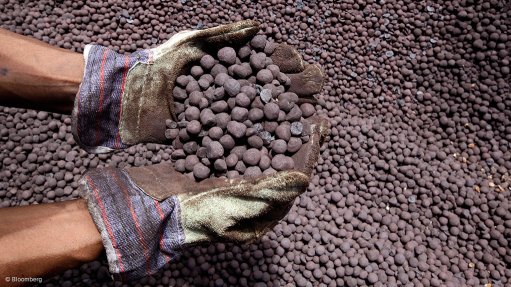Mechanisation key to long-term industry sustainability
Conventional platinum group metals (PGMs) producers are likely to struggle into 2037, as their exposure to increasing labour costs and low production rates tighten margins, Platinum Group Metals CEO R Michael Jones said on September 9.
Speaking at the PGMs Industry Day hosted online, he cited data from S&P Global Market Intelligence and Fraser McGill, he emphasised the advantages of mechanised operations.
He presented a forecast to 2037, which “factored in a 4% escalation in electricity costs, as well as a 4% escalation in labour costs, over and above the standard South African escalation of around 7% – which most people can acknowledge is pretty likely.”
The analysis also used September 2 PGMs spot prices to demonstrate that, in 2037, underground labour-intensive operations will likely have an average all-in sustaining cost (AISC) of $1 737/oz of platinum, palladium, rhodium and gold (4E), compared with underground mechanised operations with an AISC of $857/oz of 4E.
He noted that, in this projection, “most [conventional] mines seem to make it, but there still are a number that are on the bubble, and certainly not able to withstand a major capital investment beyond basic sustaining capital”.
The best performing conventional operation had an AISC margin of just below $500/oz of 4E, he pointed out.
Moreover, he said this was the “rosy” prediction.
Jones said that if the analysis substituted September 4, 2019, spot prices – which were used in the Waterberg definitive feasibility study – all conventional mines would have negative AISC margins.
In both scenarios, labour costs for conventional operations account for $ 1 435/oz of 4E.
He commented that, in the 2019 scenario, “your mechanised mines survive because that 4% escalation in labour doesn’t get to you”.
He also suggested that producers take comfort in current prices, because, “although the price deck moved up substantially this year, it kind of has to in order to maintain [global] production”.
Jones noted that these scenarios demonstrated why it was important for operations to be on the lower end of the cost curve and, especially, to reduce their exposure to labour costs.
Moreover, while it was accepted that mechanised operations were more efficient in terms of productivity, he emphasised this by citing data compiled by Metal Focus, noting that conventional mines generally produced about 3 oz per employee a month, compared with mechanised operations, which produce up to 8 oz per employee a month, while bulk mechanised operations can produce between 20 oz and 40 oz per employee per month.
Jones noted that given the above data points, Waterberg, which is a bulk mechanised project, is well positioned for growth, going forward.
WATERBERG
Jones noted that he expected to attain a mining right before the end of the year.
He noted that the “single most important” factor to consider when developing a project is knowing the backdrop and market at which the project will become commercially operational.
Jones said he thought the market was “pretty robust”, adding that he was impressed with the rebound in vehicle sales in the US and Asian markets, and that he thought the tightness in economic conditions would push consumers to vehicles with “small gasoline engines”, which is positive for palladium autocatalysts.
Further, he thought the project’s biggest opportunity was that there were not many new projects, and there were “very few palladium-dominant projects”. This, combined with the strategic importance of palladium and the current and expected palladium prices, presented significant growth prospects.
He commented that the company was very confident that Waterberg would raise the required capital, because it was at the bottom of the cost curve, it has several offtake opportunities and he felt that the South African investment climate was improving.
The discussion, called 'Opportunities and Risks for Future Players in a post-Covid-19 World', was chaired by EY Africa mergers and acquisitions head Sandra du Toit.
Comments
Press Office
Announcements
What's On
Subscribe to improve your user experience...
Option 1 (equivalent of R125 a month):
Receive a weekly copy of Creamer Media's Engineering News & Mining Weekly magazine
(print copy for those in South Africa and e-magazine for those outside of South Africa)
Receive daily email newsletters
Access to full search results
Access archive of magazine back copies
Access to Projects in Progress
Access to ONE Research Report of your choice in PDF format
Option 2 (equivalent of R375 a month):
All benefits from Option 1
PLUS
Access to Creamer Media's Research Channel Africa for ALL Research Reports, in PDF format, on various industrial and mining sectors
including Electricity; Water; Energy Transition; Hydrogen; Roads, Rail and Ports; Coal; Gold; Platinum; Battery Metals; etc.
Already a subscriber?
Forgotten your password?
Receive weekly copy of Creamer Media's Engineering News & Mining Weekly magazine (print copy for those in South Africa and e-magazine for those outside of South Africa)
➕
Recieve daily email newsletters
➕
Access to full search results
➕
Access archive of magazine back copies
➕
Access to Projects in Progress
➕
Access to ONE Research Report of your choice in PDF format
RESEARCH CHANNEL AFRICA
R4500 (equivalent of R375 a month)
SUBSCRIBEAll benefits from Option 1
➕
Access to Creamer Media's Research Channel Africa for ALL Research Reports on various industrial and mining sectors, in PDF format, including on:
Electricity
➕
Water
➕
Energy Transition
➕
Hydrogen
➕
Roads, Rail and Ports
➕
Coal
➕
Gold
➕
Platinum
➕
Battery Metals
➕
etc.
Receive all benefits from Option 1 or Option 2 delivered to numerous people at your company
➕
Multiple User names and Passwords for simultaneous log-ins
➕
Intranet integration access to all in your organisation

















